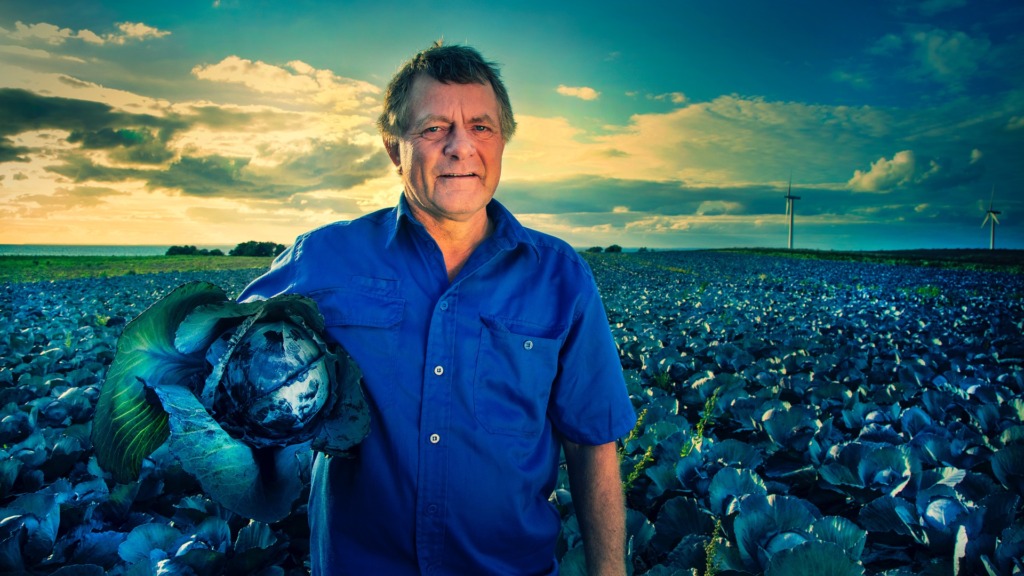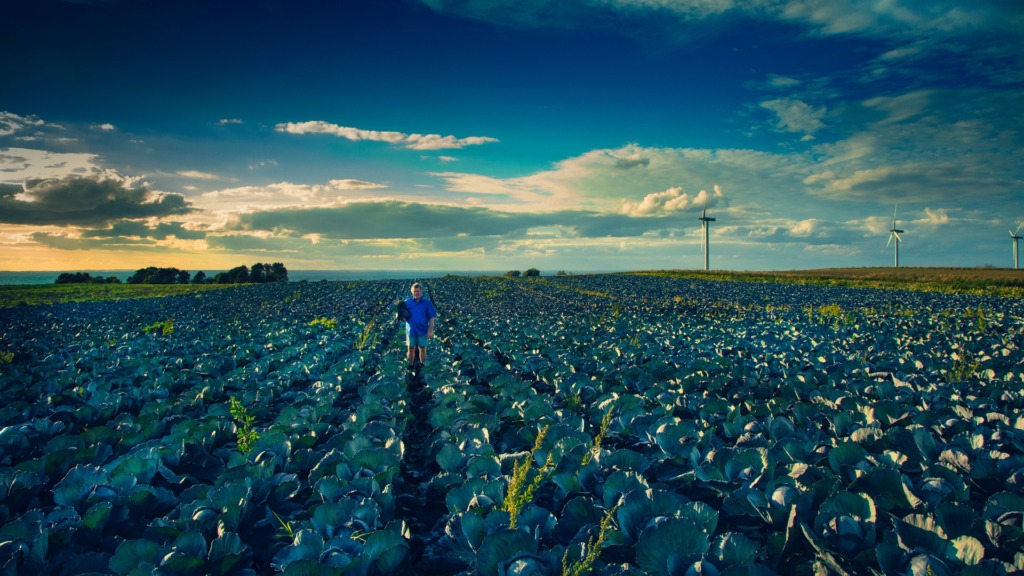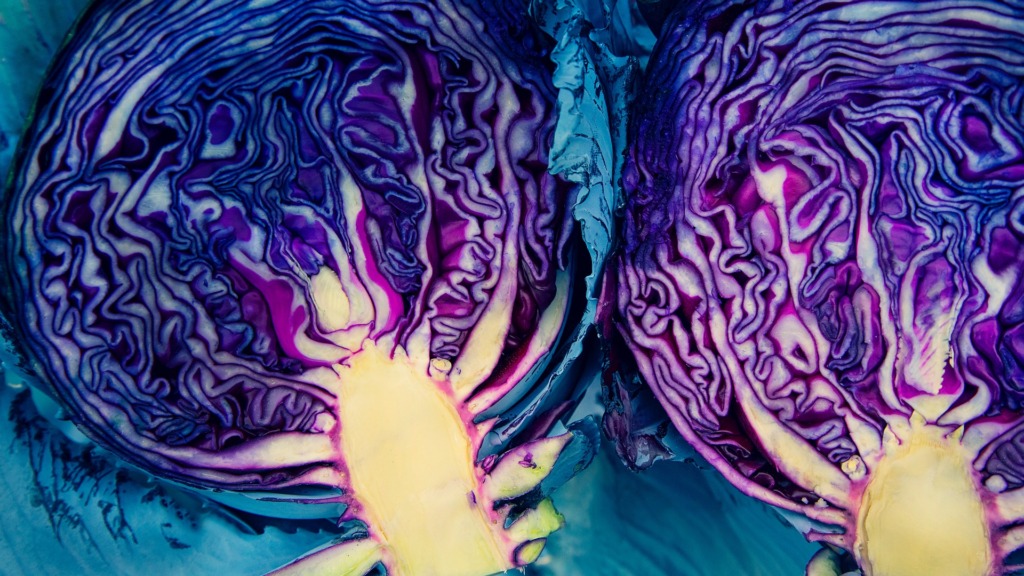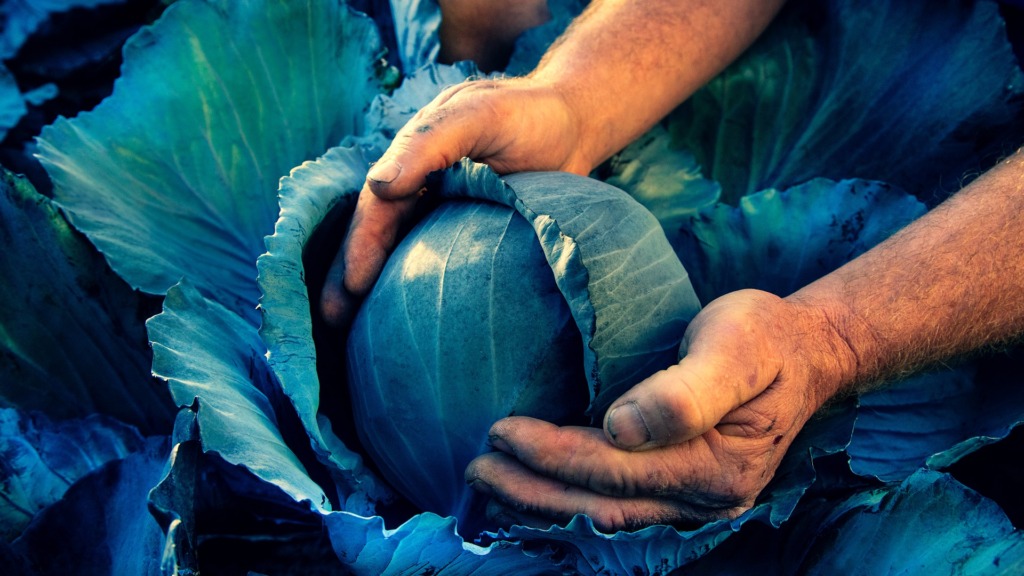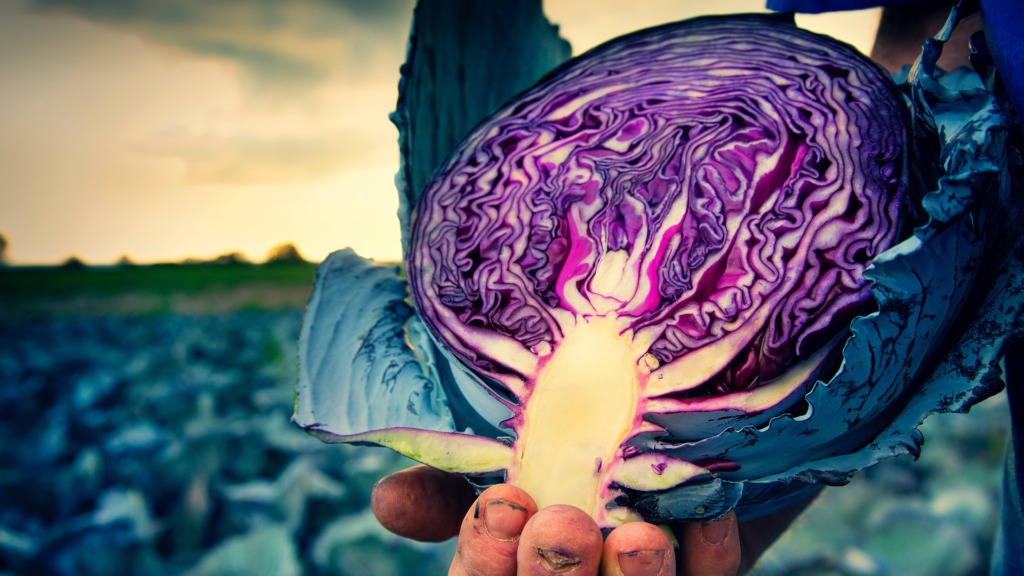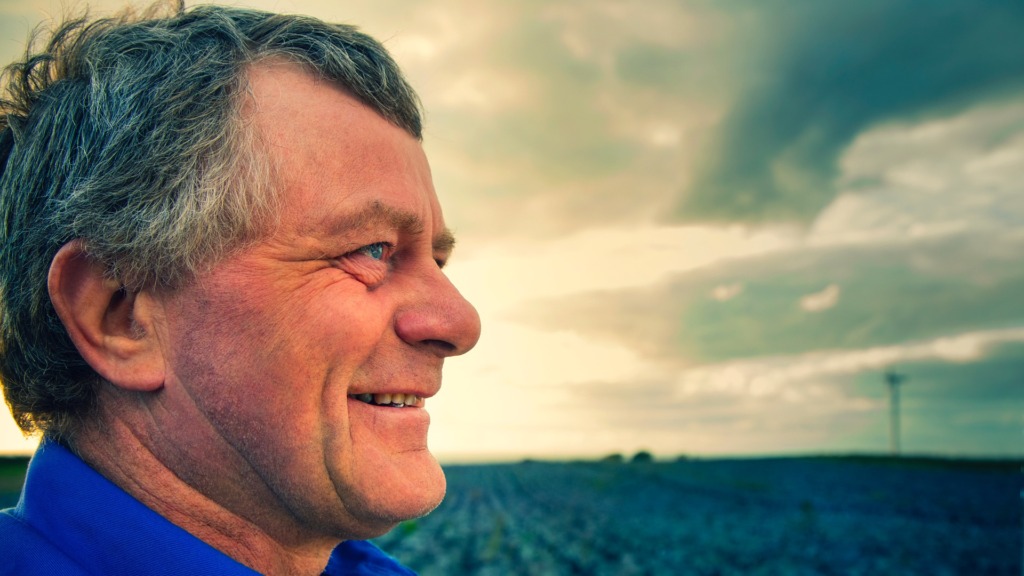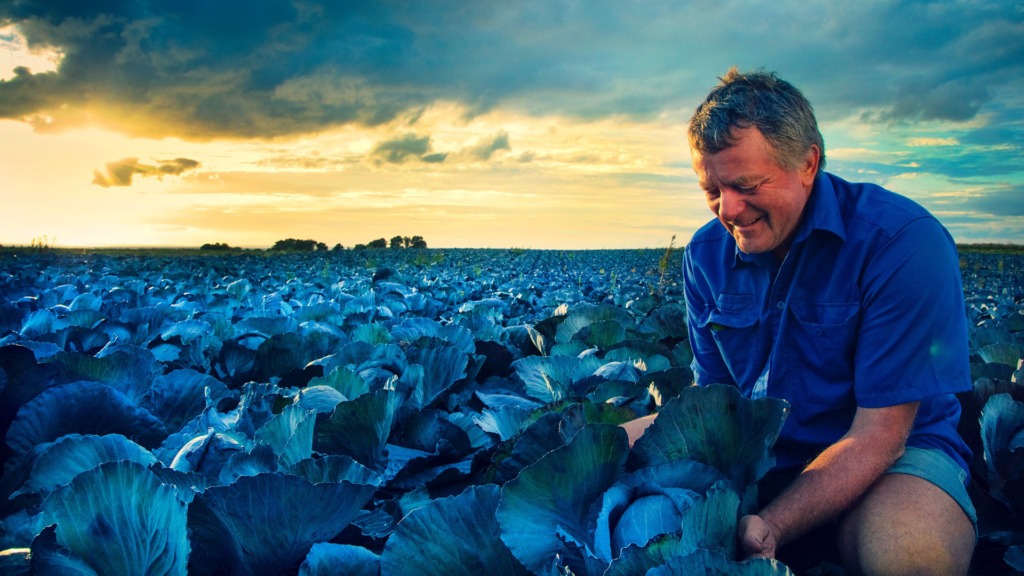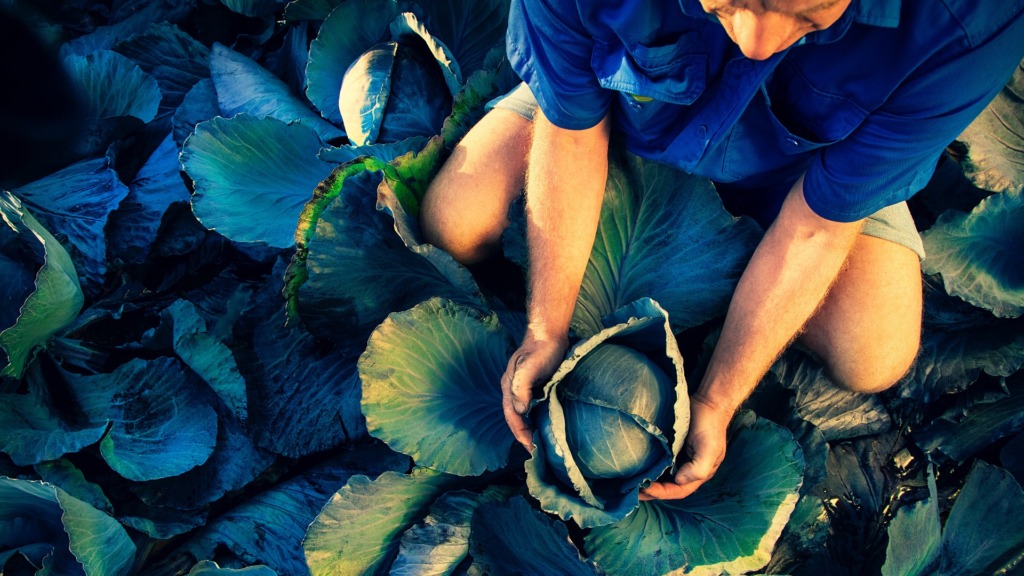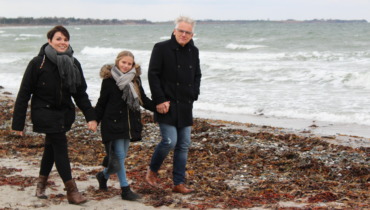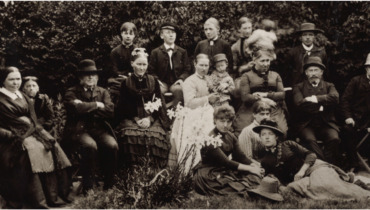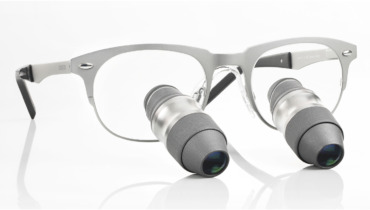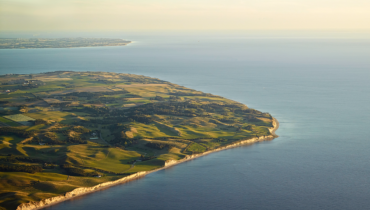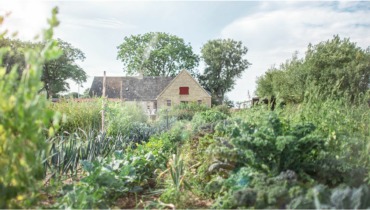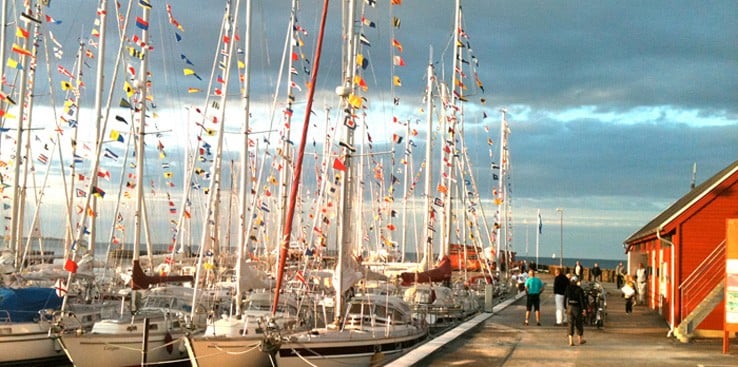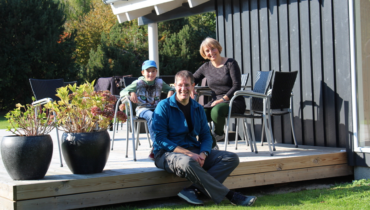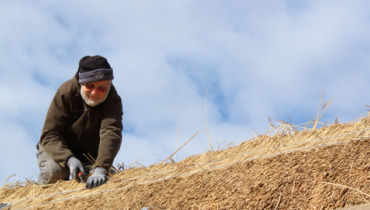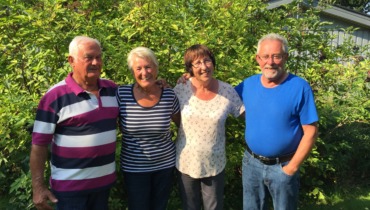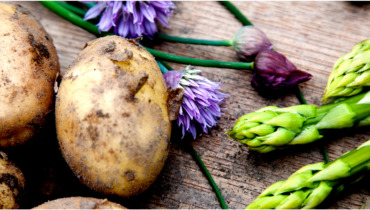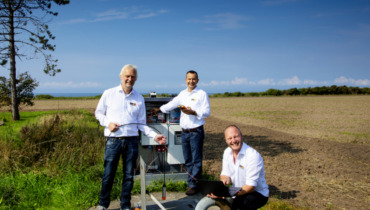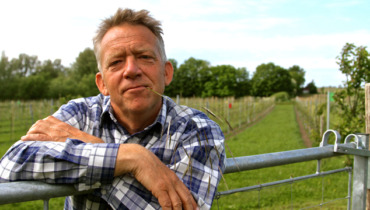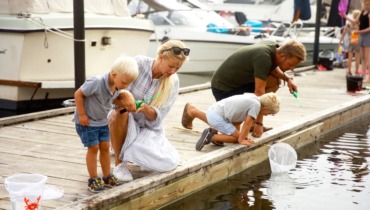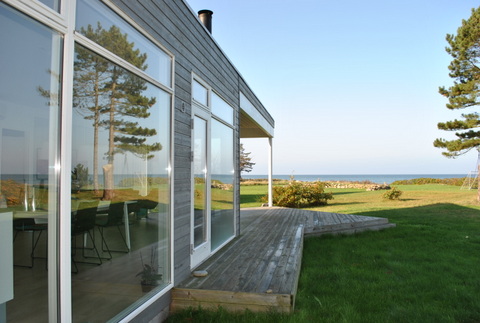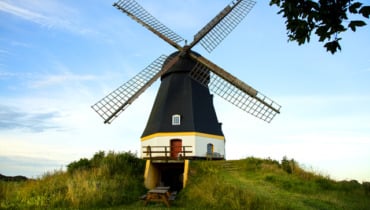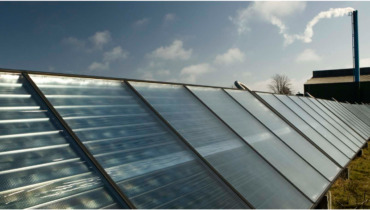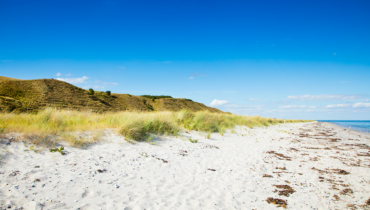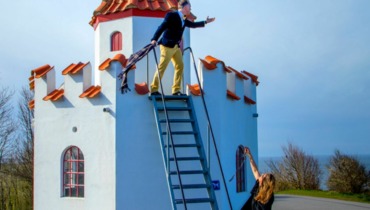Head office with a sea view
Row upon row, the purple heads turn to face the sun, which quietly dives into the western sea. In the middle of the field, surrounded by tens of thousands of shiny red cabbages, we meet a man in shorts.
The man’s name is Morten Alexandersen and over the course of the past twenty years of growing red cabbage, he has produced several thousand tonnes. And his enthusiasm for red cabbages still remains. They are so beautiful out there in the field in all their many reddish-purple shades. They are fascinating to grow and they also taste great, as he says.
Sauerkraut, cabbage stew and soup ingredient
Red cabbage has been part of the Danish diet for almost 500 years. For the first few hundred years, the fate of the red cabbage was to be used in sauerkraut, cabbage stew and as a soup ingredient until the 19th century, when someone decided to cook the cabbage with vinegar and sugar.
In a cookbook from 1888, the dish is named in posh French ‘Chou rouge á la danoise’ but not until ‘Mrs Constantin’s Housekeeping and Cookbook’ from 1902 do we find the recipe we know today as a popular side dish served alongside roast pork, meatballs and other meat dishes. But before you can sink your teeth into the sweet, soft cabbage, seeds must first sprout into leaves and leaves in turn develop into heads.
A few tractor loads
In December, Morten orders the plants for the coming year and from the end of April to the middle of May, the young seedlings are planted in the field. Over the summer, the cabbages are tended to while growing larger. “Red cabbage has an astonishing capacity for growth. The seedlings we plant weigh only a few grams but when we harvest the fully grown cabbages, their weight has increased a thousandfold. It is quite impressive,” says Morten.
Morten grows all his red cabbages for Samsø Syltefabrik (producing pickled and preserved vegetables in jars) and the cabbages must be large. “I grow three different varieties of red cabbage, which are ready for harvest at different times. We start harvesting the first ones at the end of August and we only finish close to Christmas and sometimes not until January,” explains Morten.
Morten collaborates with three other red cabbage growers on Samsø, who all deliver to the Syltefabrik. Together they harvest around 700.000 red cabbages in one season. “The red cabbages for pickling must each weigh around three kilos when they are harvested. That equates to 2.100.000 kilos of red cabbage, which amounts to quite a few tractor loads, ” states Morten.
The preserved food connection
In addition to red cabbage, Morten also supplies beetroot, hokkaido pumpkin and white cabbage to Samsø Syltefabrik, which originally started as a dairy in 1887. When the dairy closed down around 1960, the premises were used by Dansk Andel Æggeeksport (egg exporting business), which sorted and sold eggs produced on Samsø. A few years later, asparagus was preserved. “At that time, asparagus cultivation was big on Samsø but it wasn’t always possible to sell all the asparagus produced during the season and so the surplus was canned. It was the start of a pickling and preserving venture, which gained momentum in 1974, when the factory was sold to FDB (a supermarket cooperative) and twenty local farmers. My father was one of those involved and I have since had a really good relationship with the factory,” explains Morten.
Red cabbage masters
During the harvest season the many hundreds of thousands of red cabbages are transported to Samsø Syltefabrik,where Denmark’s champion picklers turn the juicy leaves into delicious pickled red cabbage. Immediately after the red cabbage is harvested and transported the short distance from the field to the factory, the workers get started. “The cabbage is washed, cut and transferred into large cooking vessels each holding up to two tonnes. This is where the magic happens,” explains Morten.
Almost every year, the pickled red cabbage from Samsø Syltefabrik wins a ‘best taste’ award and one of the reasons for this success is found in the factory’s pickling room, where the manager makes sure that the vinegar is just right. Unlike many other preserved products on the market that are based on chemically produced acetic acid, Samsø Syltefabrik only uses brewed spirit vinegar. And then there are the recipes, which are of course top secret.
Red cabbage:
- is also grown on Samsø for direct consumption – that is, as fresh cabbage. Kjeldahl in Nordby produces around 350.000 red cabbages each year for direct consumption. 60 percent of the red cabbage is sold during the last five days leading up to Christmas and all the red cabbages are harvested by hand.
- going to Samsø Syltefabrik is harvested by machine. The machine cuts the cabbage off at the stem and trims off the outer leaves.
- changes colour according to the acidity of the soil and the colours can vary from almost burgundy to purple.
Morten Alexandersen:
- was born on Samsø and lives on a farm in Pillemark.
- produces both conventional and organic beetroot and red cabbage for Samsø Syltefabrik.
- also grows potatoes, strawberries, blueberries, blackcurrants and redcurrants, cereals, rapeseed etc.
- eats a lot of red cabbage himself – both pickled and in salads.
Last updated: 25/02/2021 13:12

